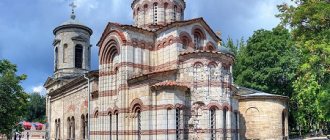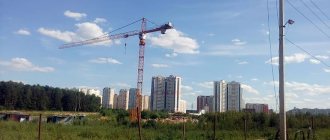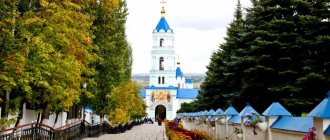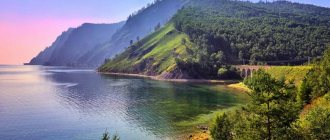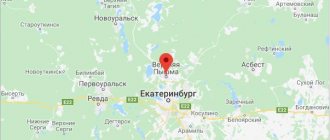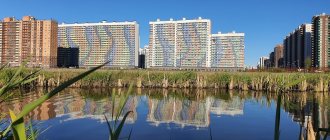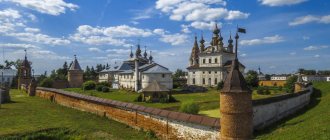Syktyvkar - a city on Sysol
Syktyvkar is the capital of the Komi Republic, the largest region in European Russia. But for all the cultural and historical richness of the region under its control, the city itself is rather faceless. First of all, it is a large industrial center (for example, the largest wood processing plant in Europe is located here), and only then everything else.
The city stands at the confluence of the Sysola River and the Vychegda. In the past it was called Ust-Sysolsk and played an important role on the trade river route that passed here. In the 1920s, the city almost became Vladimir Lenin, and in the 1930s, Joseph Stalin. Its modern name - Syktyvkar - is translated from the Komi language as “City on Sysol”.
Like Arkhangelsk, like Naryan-Mar, it is rather not a city, but an agglomeration of several villages with expressive names: Ezhva, Chovyu, Tentyukovo, Dyrnos, Davpon, Kirul, Kochpon, Paris, Orbita, Meat Processing Plant and, traditionally for the north, Sawmill. The central district of the city, which once was Ust-Sysolsky, is no larger in size than the Central district of Naryan-Mar. But unlike the latter, exactly an order of magnitude more people live in the Syktyvkar agglomeration - no less than almost a quarter of a million.
Syktyvkar is located on the still unfinished Belkomur railway route (White Sea - Komi - Ural), which someday (but this is not certain) will connect Arkhangelsk with Perm. In the meantime, you can get here by rail only along a dead-end road from the Mikun station, located on the Konosha-Vorkuta railway. But right in the center of Syktyvkar there is an airport that has international status. True, you can only fly abroad from here to Antalya and only in the summer.
We had dinner at the Zhakov restaurant. It is located on the first floor of the Syktyvkar hotel. This is one of the best establishments in the city, I recommend it!
When we were in Syktyvkar, the city was preparing to celebrate Maslenitsa.
Maslenitsa effigies flocked to the central square from everywhere to take part in the competition.
The heart of the city is Stefanovskaya Square. Once upon a time there stood a cathedral of the same name.
On a gloomy holiday morning, the square, surrounded by disgusting gray fences, looked uncomfortable. From behind the fence, the granite statue of Vladimir Ilyich looked at the surrounding reality with bewilderment. The monument under it was full of the inscription “Leninly - Komi yozsyan” (translated from Komi - “To Lenin - from the Komi people”). I've only seen something more interesting in Hanoi.
If you don’t look closely, all the capitals of Russian regions under the snow are the same. I could take exactly the same photograph in Vologda or Petrozavodsk.
The architectural appearance of Syktyvkar is like a layer cake.
Its newest layer is the categorically faceless modern high-rise buildings. At their feet, good old wooden houses are living out their last years. Barnaul or Irkutsk, for example, look the same.
Serial Khrushchev-Brezhnev panels in Syktyvkar - even those look more profitable than all this inexpressiveness of the era of petrodollar prosperity.
Balconies and loggias of irregular shape, friezes decorated with national ornaments, colors - all this undoubtedly adds to the city’s originality.
Here are ordinary balconies in a typical Khrushchev 335 series. But they are also decorated with stylish ornaments on neat vertical boards.
It is these details that preserve the architectural exclusivity of Syktyvkar. Unfortunately, local residents do not understand this and believe that it is better to knock it all down by sticking cheap Chinese plastic instead. Ignorant.
Stalin's stone buildings are good by default, especially if their blocks are low-rise. In this way, by the way, Syktyvkar is very similar to Ukhta, only if in the latter the preservation of houses is on the verge of fantasy, then here everything is like everywhere else: randomly glazed balconies, advertising signs and other nonsense.
The photo shows the first fully equipped house in Syktyvkar, which immediately had central heating and hot water supply. It was built in 1939.
I repeat: the low-rise Stalinist Empire style is the best thing that has happened to architecture in Russia since 1918. It is very touching that in Syktyvkar there are caring people who understand this. So, in January 2021, the Soviet neon signs “Gastronomy” and “Grocery” were restored, so wonderfully complementing the image of one of the houses in the city center. Now they have been returned to their rightful place and glow beautifully in the evenings.
Syktyvkar has a huge number of old wooden houses. Some of them are former houses of local merchants (in the foreground, date of construction - 1907), some are Stalinist barracks (in the background, date of construction - 1940). The difference between them, apart from the external decor, is barely perceptible. People still live in both.
On the right is one of the oldest surviving stone buildings: the house of the merchant Oplesnin, 1908. On the left is the building of the Republican Center for Continuing Education; I suspect that this is some kind of antique new building, it’s kind of awkward.
There is no sign of tourism in Syktyvkar, and coming here of your own free will is a dubious idea. The list of official attractions only causes a yawn.
Mushroom Lane is, like, the narrowest in the world (thanks to Natasha Beshkareva for the photo).
In fact, it is just a gap between the houses.
Monument to the letter "Ö". In addition to Komi in Russia, this letter is used in the Mari, Udmurt, Khanty and some Altai languages.
The modern Komi alphabet is based on the Cyrillic alphabet. There are 35 letters in total. In addition to “Ö” there is also “I”, and all the rest are like in Russian.
Memorial "Repentance", in memory of Gulag prisoners.
The National Museum of the Komi Republic welcomes surprised visitors with books on folk art for ten rubles. The books, by the way, are interesting, and in three languages: Russian, Komi and English. I bought myself one.
Komi is a Finno-Ugric people. It is divided into Komi-Zyryans, living mainly in the territory of the Komi Republic, and Komi-Permyaks, living in the north of the Perm Territory. They have one language, but it is divided into a dozen dialects.
In total, there are just under thirty Finno-Ugric peoples in the world: from the Hungarians, Finns and Sami to the Mordovians, Khanty and Mansi. Komi is located in the very center of this amazing Finno-Ugric world.
In Komi mythology there is a sacred tree - As-pu (translated from Komi - “Own tree”). This tree is a human double (it’s interesting that the Nenets also have a similar belief, remember the story about Kozmin’s copse; and in the Russian North there is still a cult of the Sacred Groves). It is believed that each Komi has his own As-pu. To find it, you need to go into the forest with a dog and wait until it starts barking at some tree. If you make a notch on As-pu, blood will start flowing from it. And such a tree can speak with a human voice, and, when cut down, has miraculous powers.
This is all a saying, but here is a fairy tale. A long time ago, the hunter Yirkap lived in Komi. He was able to find As-pu and made magic skis out of it that carried him around the world at incredible speed. There also lived in that region a witch who either intended to marry him to her daughter, or wanted to take possession of his skis, or simply decided to take him for show off - there are many variations of this story. But the result is the same: she turned her daughter into a blue deer and declared that Yirkap would never catch up with him. And the hunter took it and caught up. Then the blue deer turned back into a girl, who began to beg Yirkap not to kill her. But he killed. And he buried it in the ground. And he wrote the inscription. And he took her heart to the witch.
Then again, there are several variants of this myth: either the sorceress decided to take revenge on him and gave him a poisonous potion (according to another version, poisoned water in which his footcloths, that is, foot wraps, were soaked), or Yirkap’s stepmother did this on the instructions of the sorceress , or the witch had nothing to do with it at all, and these were hunters who were jealous of Yirkap’s luck, but, be that as it may, Yirkap then fell through the ice on one of the lakes and died. But that’s not all: according to one version, Yirkap fell through with only one leg, and the second leg came off and, together with the magic ski, crashed into the same As-pu tree.
Legends are legends, but many thousands of years later - in 1964 - during the development of peat, a fragment of an ancient ski was found somewhere between Syktyvkar and Ukhta. Its front part was decorated with the head of an elk, and when moving on these skis, the elk seemed to walk ahead of the person.
The study showed that this fragment is about eight thousand years old (but that is, these skis are almost twice as old as the Egyptian pyramids). Officially, this is the oldest ski in the world, and Komi is now considered the birthplace of this method of transportation.
But the Nenets idols brought here from the Torasoveysky Bay of the Kara Sea seem to me to be more unique exhibits. This is a man and a woman. Their age is unknown, but it is obvious that they are hundreds of years old. It is interesting that these sculptures are created from living wood, and in the place where they were installed there is bare tundra, and the nearest forest is three hundred kilometers away. Their uniqueness lies in the fact that practically no other similar idols have survived to this day - over the course of centuries they were destroyed: first by Christian missionaries, then by communist atheists.
The cultural layer in Komi is quite rich.
On the left are pendants and plaques (III-VIII centuries AD). This is the so-called Perm animal style, a type of bronze sculpture. Under number two you can see a bird of prey - the prototype of the modern coat of arms of the Komi Republic. Number three is an image of a man, and if you look closely at it, you can see the head of an elk. For the ancient Komi, the elk was a sacred animal, a representative of the heavenly world, so it was no coincidence that it was carved on that very ski.
On the right is a bronze figure of a winged woman (IV-V centuries AD).
Well, I don’t think I’ll surprise anyone with spinning wheels. This is a typical attribute of all peasant houses without exception on the European territory of Russia. I will only draw your attention to the abundance of their forms, characteristic exclusively of Komi.
Model of a traditional Komi hut.
All household utensils were not bought, but were always made by the owner of the house.
On the right is a sideboard with solar signs. On the left is the entrance to the golbets, there was a descent into the basement (the lower part of the house). Please note that above the door there is a symbol of water, this is the personification of the underworld.
Traditional wedding dress.
Bassinet, high chair and toy horse.
It is believed that one of the traditional aspects of the ancient Komi culture is brewing. In Komi, this drink has long been called sur. Everyone cooked it except the Izhem Komi people. The recipe for sur is hundreds of years old; each family had its own recipe and was passed on from generation to generation. Traditionally, brewing in Komi was carried out by women.
Sur was a sacred drink. It was used in various rituals. The sur was stored in special wooden barrels and served in duck-shaped bowls (let me remind you that the duck is one of the most important sacred symbols of the Komi people).
The bathhouse occupied a special place in the life of the Komi people. Diseases were treated here, children were given birth, and rituals were performed.
Traditional sauna - of course, black.
Most Komi men were hunters. The traditional hunting dwelling was a small log building with a minimum of amenities, but suitable for long-term living.
Pike teeth were always hung in the corner, considered the most powerful amulet against misfortune. They can still be found today in village houses above doors and windows, and in speech the old answer to swearing and damage is still used: “A pike tooth in your throat!”
Interesting, as always, the details.
Ax holder.
Powder flask and flint bag.
One of the main hunting attributes is skis trimmed with reindeer kamus (skin from the shin of an animal). This technology is still alive: now the lower surface of snowboards is covered with camus.
For one pair of skis, a camus with four or five reindeer was needed. It is not surprising that skis were very valuable - you could easily exchange a cow for them.
The main prey, of course, was fur. In order not to damage animal skins, Komi hunters used bows and arrows when hunting until the beginning of the 20th century.
The most revered of the large animals was the bear. The Komi lived side by side with them for centuries and treated these animals with great respect. They were called brothers, and if they had to kill a bear, the hunter always asked for forgiveness: forgive me, brother, that I have to kill you.
The village of Vylgort adjoins Syktyvkar from the southwest. In fact, this is a Syktyvkar suburb, no different from the chain of villages that extend from the city to the north for a dozen kilometers. But administratively this is no longer Syktyvkar.
Vylgort translated from Komi means “New Housing”. The village has been known since the end of the 16th century. In the past, this was the third largest settlement in Perm Malaya (read: Perm Vychegodskaya), then only Ust-Sysolsk (read: Syktyvkar) and Yarensk were larger. Nowadays, Vylgort is the largest village in the Komi Republic.
There are two attractions in Vylgort. The first is a wooden school building built in 1913.
The second is the House of Folk Crafts “Zaran”. Its log building, although a slightly awkward remake (it was cut down in 2008), is still original and, I would even say, extravagant. It's interesting to look at him.
In the workshops of the House of Crafts, local residents are engaged in artistic processing of wood and birch bark, weaving and pottery, lace making and batik.
The boys are planing.
The girls are drawing.
The looms here are all working.
And the traditions of Vologda lace-making (using bolster pillows and bobbins), apparently, are alive not only in Vologda.
The House of Crafts has its own souvenir shop. According to the recent tradition in the north, all products are signed: name, composition, name of the author.
That's all for today.
Don't switch!
Continuation: Finno-Ugric Ethnopark or Operation Yb
Photo of the day: old and new Syktyvkar
News from Syktyvkar
News from Syktyvkar
Syktyvkar
In Syktyvkar, Russian Guards detained a man who was disorderly in a church
Auto in Komi
Auto.russia24.pro
In Syktyvkar, the driver of a Gazelle did not let a Lada pass. In Komi, a truck spun a Gazelle, two people are in the hospital. In Syktyvkar, a gas filling station opened for the first time in 30 years. Syktyvkar residents were frightened by announcements about increasing prices for bus fares.
Sports in Komi
Sport.russia24.pro
A new ski resort will open in Syktyvkar Murmansk athlete took bronze in powerlifting competition Bright taste and benefits: treat yourself to a new winter menu at the Fresh-Fit fitness cafe from X-Fit Ilya Averbukh could not hold back his tears when talking about the health of Tatyana Tarasova
Tennis news
ATP
Russian tennis player Aslan Karatsev received the ATP prize in the “Progress of the Year” category
Health in Komi
Health.russia24.pro
Coronavirus in Komi: 260 new cases and 8 deaths In Komi, a truck turned around a Gazelle, two people in the hospital Bright taste and benefits: treat yourself to the new winter menu at the Fresh-Fit fitness cafe from X-Fit “Active citizens” approved the improvement of the hospital named after S.S. Yudina
Ecology in Komi
Ecology.russia24.pro
Forest defenders are for separate waste collection! The competition of eco-articles and video blogs “New Year - New Traditions” has started. Toyota plans to present 30 models of electric vehicles by 2030. The “Mom, I’m an Environmentalist” campaign will bring young people closer to their families and neighbors.
Coronavirus in Komi
Covid.russia24.pro
Only 13% of Syktyvkar residents can live for more than six months on savings alone Remote work has become the cause of frequent conflicts between employees and employers Gamaleya Center shared details of the development of a new drug for COVID-19 Rosatom can create a model for the distribution of Omicron in Russia in a few days
Music news
Dmitry Shostakovich
Concert of Shostakovich's music at the Church of the Savior on Spilled Blood canceled
Power
Putin.russia24.pro
Dreams come true: Putin invited a schoolgirl to an ice show in Moscow - Daily Storm “Shoulder to shoulder”: Russia and China revealed their plans The mother of the girl, whose wish was granted by Putin, thanked the president Pushkov criticized McFaul’s words about “Ukrainian democracy”
Opposition
Navalny.russia24.pro
“From the window I see only the sky and a little temple.” Liliya Chanysheva - about the conditions of detention in the pre-trial detention center Handwriting of the State Department: the senator analyzed the text of Daria Navalnaya’s speech in the European Parliament Navalny’s daughter received the European Parliament Prize named after Academician Sakharov for her father Lawyer Craft explained the European Parliament’s typos in Navalny’s “AleSkey” letter
Russia
Ru24.pro
Arrived on the shelves: Russians bought up train tickets to the regions Unregistered survivors of COVID-19 will be able to receive certificates Naryshkin announced the failure of the Western action with Navalny in the role of a “sacred victim” The mother of the girl, whose wish was fulfilled by Putin, thanked the president
Ukraine
Ua24.pro
Head of NADS Natalia Alyushina: “We have maximally adhered to the barrier-free principle” “The fight is going on on all fronts” - Hetmantsiv about the war against crooks The 30-river star of the page “Parasites” was diagnosed with cancer Having left Prykarpattya and gone wild for help to the doctors: water was mixed, what happened after the fatal collision with a submarine in Transcarpathia (PHOTO)
Belarus
Lukashenko.russia24.pro
Belarusians got a knock from below: Lukashenko plunged the country into total fear Father’s flogging Belarusians named Lukashenko’s main achievements Lukashenko promised to build Belarus in a new way after the adoption of amendments to the constitution
Personal news
Alina Zagitova
Figure skater Zagitova may close her Instagram page due to hate in the comments
Life
Life24.pro
Revyline RL 040 electric toothbrushes with two attachments are available in Samara. A set of RL 800 irrigator and RL 010 sonic brush from Revyline in Perm for the New Year. A new system of electronic catalogs and brochures was launched on the website marykay.ru - “Interactive Catalog”. Nikita Efremov clothing and footwear store opened in St. Petersburg
Blogs
News24.pro
NEW YEAR'S TREE AT ŠKODA AUTHORUS PODOLSK Unregistered survivors of COVID-19 will be able to receive certificates Chumakov Center is developing a vaccine against COVID-19 based on insect viruses “Good caps,” or How waste turns into good deeds
Entertainment
Game24.pro
5 Triceps Training Mistakes You Don't Notice Bubble Buster 2048 2.6 Diablo 2 is getting its first class balance changes in 11 years Sword Master Story 4.2.327
In the world today
Today24.pro
Leicester star Maddison jokes he 'always preferred Gaz' after Geordie Shore star Scotty T calls him 'cheating c***' Is Microsoft down? App not working explained Bayern's five-man wishlist could wreck Prem clubs' transfer plans with Haaland among targets to replace Lewandowski 3 Potato Dishes That You Need Try! VLOGMAS Day 14
Other news today
123ru.net
Mass arrests of supporters of Ukrainian neo-Nazis A car crossing has opened in Syktyvkar Aleshino Coronavirus in Komi: 18 more deaths of infected people Vyzhutovich: It is quite possible to diversify production in single-industry towns
29ru.net
In Komi, the guy who drew a swastika was convicted. The centenary year of Komi was captured on Yandex panoramas. The criminal case of human rights activist Ernest Mezak for insulting a judge was transferred to the Syktyvdinsky court. Without a declaration of war: CIAN invited visitors to seize Russia, and the Russians to capitulate
Russia24.pro
- the whole truth about Russia and from Russia 24/7 (today and now).
Russia24.pro
is a federal Internet platform for media resources of Russian regions in a calendar format based on a technological news information retrieval system with elements of artificial intelligence, geo-selection and the ability to instantly publish copyrighted content in Free Public mode.
Russia24.pro
- your news today and now
in Syktyvkar
.
All authors of publications are on SMI24.net (with comments 24/7) from Ru24.net (a lightweight version of the international platform 123ru.net, taking into account the current legislation of the Russian Federation regarding the media). All news in English today and now is here.
You can publish news in any city and region instantly - here, as well as on the pages of partner projects 103news.com and RSS +
Syktyvkar on Russian.city
Secular news (rumours, gossip, word of mouth, show business, ratings)
News aggregator 24SMI
Latest publications of the hour
- information and educational Internet channel about everything that is happening today and now and happened once (in the archive, in calendar format) in all regions of Russia (not to be confused with the federal TV channel "Russia 24") - news, articles, messages , remarks, statements, comments from the farthest corners of the country, specific regions, cities, towns and villages from specific sources at the current time with authorized content updates every minute (texts, photos, videos) based on the author’s unique technology for processing a large amount of data per unit of time (currently, this is more than 20,000 sources of publications daily from all over the world and in almost all popular languages of the planet) in online format. Russian24.pro - always the latest news without cuts and moderation on the Russia24.pro channel, as well as global subsidiary geo and thematic projects News-Life.pro, News24.pro, BigPot.News and the oldest basic news platform 123ru.net, as well as its satellites. We value your time and every opinion and never impose our vision of events. The editorial point of view does not always coincide with the interpretation of the authors and the texts of published news and articles. Thank you for being with us and in the world now. Free news publication is available in any city and region in any language (detected automatically) via the link and at the bottom of each page.
News Every Day
Bayern's five-man wishlist could wreck Prem clubs' transfer plans with Haaland among targets to replace Lewandowski
Game24.pro
Game24.pro
5 Triceps Training Mistakes You Don't Notice The Razer BlackShark V2 X is 50 percent off at Amazon Australia Diablo 2 is getting its first class balance changes in 11 years Sword Master Story 4.2.327
KomiOnline
Wednesday, October 31, 2007, 13:40 17915 1 0
Many Syktyvkar residents have no idea what this or that name of the street on which they live means. Although by the names of streets, alleys, squares, microdistricts, towns of Syktyvkar, you can study not only the history of the city, republic, country, but also geography or, for example, you can understand the type of activity of the townspeople who once lived there. The KomiOnline correspondent tried to find out where the existing streets of Syktyvkar lead and to what past they refer.
Historical names
According to some historical sources, in 1783 the first master plan for the development of Ust-Sysolsk was developed in St. Petersburg, according to which it developed during the 18-20 centuries. Then the city was divided into 26 blocks, in which 12 streets were planned; the general plan included nearby small villages within the city limits. Some of them eventually turned into city streets, others remained villages. In a document of 1783, the following streets were recorded: 1st Longitudinal, 2nd Poperechnaya, Naberezhnaya, Pokrovskaya. One of the main streets of Ust-Sysolsk was named the only named street - Sukhanovskaya, although the Sukhanov merchants did not live on it. It got its name from the road that was laid by the Sukhanov peasants who settled on the banks of the Sysola River. This road led to the Vyatka-Vymsky tract, which ran along the current International; people called it in Komi - Sukhanov-tui.
Before the revolution of 1917 in Syktyvkar, only Sukhanovskaya, Pokrovskaya and Naberezhnaya streets were considered historical; the rest received their names at the end of the 19th century and cannot be considered historical. However, most of the pre-revolutionary names of the city’s streets have not been preserved; after 1930, they began to actively rename them. Toponymic “rebranding” was necessary both to combat the tsarist past and to perpetuate the achievements of the great leaders of the young Soviet state. Thus, the main square of the city, Stefanovskaya, where the St. Stephen’s Cathedral was located, became Yubileiny, Trekhsvyatskaya street received the name Kommunisticheskaya, Troitskaya - Lenin, Pokrovskaya - Ordzhonikidze, Spasskaya - Sovetskaya, Predtechenskaya - Kuratova.
During the years of the first post-war five-year plans, the city of Syktyvkar grew significantly and improved. In 1958, it had more than 100 streets, the length of which was over 45 kilometers, and less than half of them were asphalt or paved with stone. After perestroika, the possibility of returning the streets of Syktyvkar to their original names began to be actively discussed, but the renaming process was completed only in relation to the main square of the capital of the republic, which since 1992 has again become Stefanovskaya. Attempts to rename Babushkina Street back to Sukhanovskaya have so far led to nothing - due to the fact that many problems will arise for citizens living on this street in connection with the re-registration of property documents.
Now Syktyvkar, together with Sawmill and Nizhny Chovo, but without the Ezhvinsky district and suburban villages, has 123 streets, 23 passages, 20 alleys, one avenue and one boulevard. The total number of streets in Syktyvkar with all its surroundings, according to city architects, has exceeded 200. In addition, in the capital of Komi there are 10 public gardens and about 30 squares, including official, transport, station, residential areas and near shopping centers. Also, several highways pass through the city, flowing smoothly from the streets - Sysolskoye (towards Kirov), Ukhtinskoye and Nyuvchimskoye, which starts from the turn to the village of Krasnozatonsky.
The total length of the entire road network of Syktyvkar cannot be calculated, according to the public relations department of the city administration. However, it is known that the longest street in Syktyvkar is Oktyabrsky Prospekt, which is 9,450 meters long, and there are plans to extend it by several tens of meters. The shortest street is Komsomolsky Lane: on 104 meters of its length there are 5 houses, although some townspeople have doubts about this fact: many consider the shortest street to be the namesake of the lesozavodskaya Shkolnaya, which opens onto Morozova Street - on this road “appendix” there is only one wooden house. Over the past five years, only one street has appeared in Syktyvkar - Pokrovsky Boulevard.
To be continued.
Share
What else to see in Syktyvkar?
We return from the park along the same Kommunisticheskaya street and turn left onto Sovetskaya. There is the center of folk culture of the Izhma Komi people “Izva” (Sovetskaya St., 28 a), where you can get acquainted with the peculiarities of this Komi subethnic group, which was formed on the basis of mutual influence of the Komi proper, Russians and Nenets. Let's walk along Sovetskaya in the other direction, again passing the intersection with Kommunisticheskaya. You will also be immersed in a corner of pre-revolutionary Ust-Sysolsk, mixed with Soviet-era houses. On the right along the way: the Oplesnin house (1892, No. 25), now the FSB office, the house of the merchant Komlin (No. 21, early 20th century), the National Library with Corinthian columns (No. 13, 1958). And two blocks later, on the corner with Ordzhonikidze Street, you will see the symbol of old Syktyvkar - a ten-meter fire tower (1907), a turret with a large weather vane and a dial that glows unusually brightly at night. The clock of this landmark of Syktyvkar strikes the time every hour from 8 to 22 with music. Inside you can visit a fire-technical exhibition. In general, fire towers in the wooden North were very relevant and before the revolution they were the high-rise dominants of cities. From the tower you can go down a block along Ordzhonikidze to the park - on the left will be the oldest stone building in the city, the Sukhanov House (1804, No. 2), which houses the literary museum. That's all, you can climb up Ordzhonikidze. Past the former women's gymnasium, and now the lyceum (No. 14, 1913, architect Androsov), you will come out onto Lenin Street, and on the right you will see the large beautiful Cathedral of Stephen of Perm (1996-2001). From here, turn two more blocks to the left, and you will again come out onto Stefanovskaya Square.
Outside the center, most of the villages that make up Syktyvkar are completely uninteresting. We can highlight the village of Ezhva (17 km to the north) - a remote but very important part of the city, where the Syktyvkar timber processing complex (1963-1968), the largest timber processing complex in Europe, is located, producing more than 40% of newsprint and cardboard in Russia. The southern suburb of Syktyvkar - Kirul, built up with wooden huts. There is a bus station and an airport there - one of the few in Russia located almost in the city center (another is currently being built, 30 km from the city). Near the bus station is the Ascension Church (1811).
See also:
- Komi Republic
- Ukhta
- Vorkuta
Walking tour of Syktyvkar
The city is very compact, and all life is concentrated on Kommunisticheskaya Street (colloquially Kommuna), connecting the station and the Sysola River. Along it you can take a standard walk for small regional centers from the station to the river (3 km). The station itself (1964) is an unfinished Stalinist classic, and the Commune is a street with several squares, built according to all the rules of classical urban development. First there will be Khrushchev and Brezhnevka buildings, decorated, however, with national ornaments and panels that you will not find in other cities of Russia. The first major intersection with Oktyabrsky Prospekt is marked by the People's Friendship Stele and the local university. Next come the official institutions, the Opera House (1968), followed by the monument to Ivan Kuratov and fountains, the Pedagogical Institute (1938).
The center of the city is Stefanovskaya Square, where you will see typically Soviet buildings: the administration of the republic (16-story building built in 1961), the Philharmonic, the State Bank (1932), the drama theater (1932, architect Shcherbakov, constructivism), as well as a lot of walking townspeople and reindeer. Here you can also go to the history department of the National Museum of the Komi Republic (Lenin St., 57). Continuing further towards the river along Kommunisticheskaya Street, you have the opportunity to visit the nature department (No. 6) and the ethnography department of the same museum (No. 2). Perhaps the ethnographic section is the most interesting, where you can examine a fragment of a traditional hut-“kerka”, an idol of the Nenets from the shores of the Kara Sea made of wood, which nature has endowed with a “draconian” appearance, a collection of Permyak amulets, embroidery and knitting, differing in patterns depending on the place of production . Both departments are occupied by former merchant shops of the 19th and 20th centuries.
Communist Street will end at the coastal Kirov Park (a birch grove), and around the corner on the right is the National Gallery of the Komi Republic (Kirova St., 44), where paintings by Levitan, Aivazovsky, Savrasov, icons are presented, and in the adjacent territory there is a regularly replenished park sculptures on Finno-Ugric themes. The gallery is located in the building of a former religious school (1890, architect V. Fedorov). If you turn left from Kommunisticheskaya, you will see a huge building of the Republican Ministry of Internal Affairs (Kirova, 38, 1938, architect Zikeev) with an eight-column portico. From the park there is a good view of the village across the river on an island between Sysola and Vychegda. There is a private sector and a small beach.
